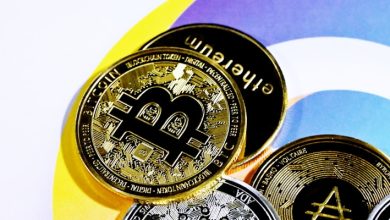The Rise of Non-Fungible Tokens (NFTs) and Their Applications Beyond Art

- Understanding the Concept of Non-Fungible Tokens (NFTs)
- Exploring the Various Use Cases of NFTs Beyond the Art World
- The Impact of NFTs on Digital Collectibles and Gaming
- How NFTs are Revolutionizing the Music and Entertainment Industry
- Challenges and Opportunities in the Growing NFT Market
- The Future of NFTs: Trends and Predictions
Understanding the Concept of Non-Fungible Tokens (NFTs)
Non-fungible tokens (NFTs) are unique digital assets that represent ownership of a specific item or piece of content. Unlike cryptocurrencies such as Bitcoin or Ethereum, which are fungible and can be exchanged on a one-to-one basis, NFTs are one-of-a-kind and cannot be replicated. This uniqueness is what gives NFTs their underlying value and has led to a surge in interest and popularity in recent years.
NFTs are built using blockchain technology, which provides a secure and transparent way to verify ownership and authenticity. Each NFT is stored on a blockchain, which acts as a digital ledger that records all transactions related to that specific token. This ensures that the ownership of an NFT can be easily verified and cannot be duplicated or forged.
One of the key characteristics of NFTs is their ability to represent a wide range of digital and physical assets, beyond just artwork. NFTs can be used to tokenize music, videos, virtual real estate, collectibles, and even real-world assets such as real estate or luxury goods. This versatility has opened up a world of possibilities for creators, collectors, and investors alike.
The concept of NFTs has revolutionized the way we think about ownership and value in the digital age. By creating a system where unique digital assets can be bought, sold, and traded securely, NFTs have the potential to disrupt traditional industries and create new opportunities for creators and consumers. As the popularity of NFTs continues to grow, it will be interesting to see how this technology is further adopted and integrated into various aspects of our lives.
Exploring the Various Use Cases of NFTs Beyond the Art World
Non-fungible tokens (NFTs) have gained significant traction in the art world, but their applications extend far beyond just digital artwork. NFTs are unique digital assets that represent ownership of a specific item or piece of content. This technology has the potential to revolutionize various industries by providing a secure and transparent way to track ownership and authenticity.
One of the most promising use cases of NFTs is in the world of collectibles. From trading cards to rare sneakers, NFTs can be used to authenticate and prove ownership of physical items. This opens up new opportunities for collectors to buy, sell, and trade rare items in a digital marketplace, without the risk of counterfeit products.
Another exciting application of NFTs is in the gaming industry. Game developers can use NFTs to create unique in-game items, characters, and skins that players can buy, sell, and trade with each other. This not only adds value to the gaming experience but also allows players to truly own their digital assets outside of the game.
Furthermore, NFTs can be used in the real estate market to represent ownership of properties. By tokenizing real estate assets, individuals can buy and sell fractions of properties, making it easier for investors to diversify their portfolios. This also streamlines the process of buying and selling real estate by reducing the need for intermediaries.
The Impact of NFTs on Digital Collectibles and Gaming
Non-Fungible Tokens (NFTs) have made a significant impact on digital collectibles and gaming industries in recent years. NFTs are unique digital assets that are stored on blockchain technology, making them one-of-a-kind and immutable. This uniqueness has revolutionized the way digital collectibles are bought, sold, and traded.
Within the gaming industry, NFTs have opened up new possibilities for ownership and monetization. Players can now own in-game items as NFTs, allowing them to buy, sell, and trade these items outside of the game environment. This has created a new market for rare and exclusive in-game assets, leading to a surge in interest from both players and collectors.
Furthermore, NFTs have introduced the concept of true ownership in the digital world. Unlike traditional digital assets that can be easily replicated, NFTs are unique and cannot be duplicated. This has added a new layer of authenticity and value to digital collectibles and in-game items, making them more desirable to collectors and players alike.
How NFTs are Revolutionizing the Music and Entertainment Industry
Non-fungible tokens (NFTs) have been making waves in the entertainment industry, particularly in music. Artists are leveraging NFTs to create unique digital collectibles that fans can purchase, allowing them to own a piece of their favorite musician’s work in a new and innovative way. These tokens are built on blockchain technology, ensuring their authenticity and scarcity, making them highly sought after by collectors and fans alike.
One of the key ways in which NFTs are revolutionizing the music industry is through the creation of limited edition albums and singles. Musicians can release exclusive tracks as NFTs, providing fans with a one-of-a-kind listening experience. This creates a new revenue stream for artists and gives fans the opportunity to support their favorite musicians in a more direct way.
Moreover, NFTs are also being used to enhance the concert experience. Artists can offer NFTs as VIP passes that grant exclusive access to meet-and-greets, backstage tours, and other perks. This not only adds value for fans but also helps artists generate additional income from their live performances.
Additionally, NFTs are transforming the way in which copyrights and royalties are managed in the music industry. By tokenizing ownership of songs and albums, artists can ensure they receive fair compensation for their work. Smart contracts embedded in NFTs can automate royalty payments, ensuring that artists are paid promptly and accurately.
Overall, the rise of NFTs in the music and entertainment industry is opening up new possibilities for artists and fans alike. From unique collectibles to enhanced concert experiences and improved royalty management, the potential applications of NFTs in music are vast and exciting. Artists and industry professionals are embracing this technology, paving the way for a more innovative and sustainable future for the music industry.
Challenges and Opportunities in the Growing NFT Market
The growing market for non-fungible tokens (NFTs) presents both challenges and opportunities for investors and creators alike. One of the primary challenges in this space is the issue of copyright infringement. As NFTs allow for the ownership and transfer of digital assets, there is a risk of unauthorized duplication and distribution of copyrighted material. This can lead to legal disputes and tarnish the reputation of NFT platforms.
On the other hand, the rise of NFTs also opens up new opportunities for artists, musicians, and other creators to monetize their work in innovative ways. By tokenizing their creations, creators can reach a global audience and receive direct payment for their art without the need for intermediaries. This can democratize the art market and empower artists to have more control over their intellectual property.
Another challenge in the growing NFT market is the environmental impact of blockchain technology. The energy consumption of blockchain networks used for minting and trading NFTs has raised concerns about carbon emissions and sustainability. As the demand for NFTs continues to rise, it is essential for the industry to explore more eco-friendly solutions to mitigate its environmental footprint.
Despite these challenges, the NFT market offers exciting opportunities for collectors and investors looking to diversify their portfolios. NFTs have the potential to revolutionize various industries beyond art, including gaming, real estate, and even identity verification. By leveraging blockchain technology, NFTs can provide unique digital assets that are scarce, verifiable, and transferable, creating new possibilities for digital ownership and value exchange.
In conclusion, while the growing NFT market presents obstacles such as copyright issues and environmental concerns, it also offers promising opportunities for creators and investors to explore new forms of ownership and value creation. As the NFT space continues to evolve, it will be crucial for stakeholders to address these challenges proactively and collaborate on sustainable solutions to ensure the long-term success and growth of the industry.
The Future of NFTs: Trends and Predictions
Looking ahead, the future of NFTs appears to be promising with several key trends and predictions shaping the landscape of this digital asset class.
One trend that is expected to continue gaining momentum is the expansion of NFTs beyond the realm of art. As more industries and sectors recognize the potential of NFTs, we can anticipate a surge in the adoption of these tokens for various applications.
Another prediction is the rise of fractionalized NFTs, which will allow multiple investors to own a share of a single NFT. This development is likely to make NFTs more accessible to a broader range of investors, driving further growth in the market.
Furthermore, advancements in blockchain technology are expected to enhance the security and efficiency of NFT transactions, making them more attractive to both creators and collectors. This increased trust in the underlying technology could pave the way for even greater mainstream acceptance of NFTs.
In conclusion, the future of NFTs is filled with exciting possibilities as these digital assets continue to evolve and find new applications beyond traditional art forms.



